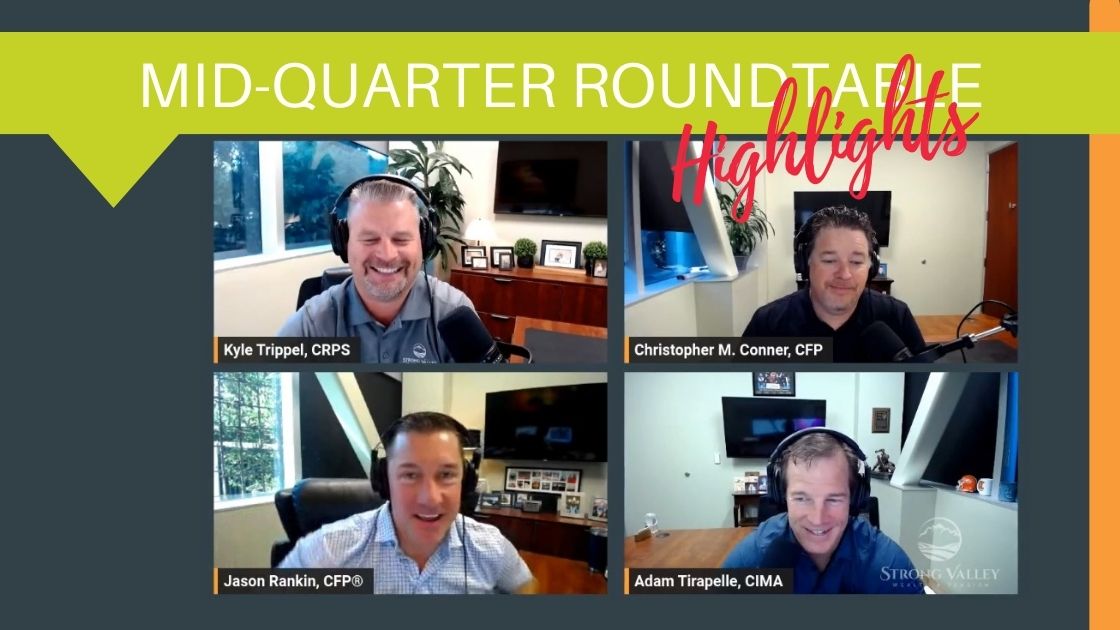You are now leaving the Strong Valley Wealth & Pension, LLC ("Strong Valley") website. By clicking on the "Schwab Alliance Access" link below you will be entering the Charles Schwab & Co., Inc. (“Schwab”) Website. Schwab is a registered broker-dealer, and is not affiliated with Strong Valley or any advisor(s) whose name(s) appears on this Website. Strong Valley is/are independently owned and operated. Schwab neither endorses nor recommends Strong Valley. Regardless of any referral or recommendation, Schwab does not endorse or recommend the investment strategy of any advisor. Schwab has agreements with Strong Valley under which Schwab provides Strong Valley with services related to your account. Schwab does not review the Strong Valley website(s), and makes no representation regarding the content of the Website(s). The information contained in the Strong Valley website should not be considered to be either a recommendation by Schwab or a solicitation of any offer to purchase or sell any securities.

Does the “Case of the Missing Money” sound like a popular mystery in your household? So often small purchases add up into bigger chunks of money that seem to disappear without an explanation.
There is a way to gain more control of your personal finances. With these 6 simple action points you can get a handle on your income and expenses, so that you can build your savings and prepare for unexpected emergencies or large purchases or even a recession.

Where does all your money go? The truth is usually not that mysterious. You can discover it with a little discipline on your part—along with the help of a budget. Many people spend their money in small increments without realizing how it all adds up. By helping you track your income and expenses, a budget can help you gain control of your personal finances.
Creating and maintaining a budget is often more successful if it is a family affair. All adult family members should be involved in the process. Since children affect and are affected by the budget, they should be included as well. When they see that the family’s income is not unlimited it can help them understand why everything they want is not always theirs for the asking.
Each family requires a personalized budget tailored to its own particular needs. Here are some of the basic steps to follow:
To start, tally all your sources of income and spending for a few weeks or months. The easy way to do this is to get a receipt for all expenditures over $1.00. You can also refer to credit card statements, receipts, and check stubs.
Set up different categories for your expenditures. The two basic types of expenses are: 1) fixed—those over which you have no control, such as mortgage or rent, insurance, and utilities; and 2) discretionary—those over which you do have control, such as clothes, movies, sports events, and dining out.
When you begin to see how much money is coming in and how much is going out, it is time to set priorities. Is your objective to buy a house or a new car? Or, to save for your child’s college education or your retirement? Perhaps your top priority is to get out of debt.
Now that you have a handle on your current income and expenses and have established some priorities, you are ready to prepare a budget. Remember to keep it simple. The less complicated, the easier it will be to maintain. For instance, to estimate expenses such as tax bills or insurance premiums, simply calculate the annual expense and divide by 12. The budget process should give you a better sense of where you need to cut expenses. It may take several passes before you whittle them down to bring them in line with your income and your financial objectives.
Get in the habit of reviewing your budget at least monthly. A weekly review is even better. A budget must be consistently maintained in order to work.
Also, review your budget at the end of each year. By totaling what you spent and comparing it to what you had budgeted, you will see areas to work on for the coming year.
Once you have prepared a budget, there are still some important things to remember. First, don’t forget to set aside emergency savings in case of an unforeseen problem, such as a job loss, or an unexpected major expense. The general rule of thumb is that an emergency savings fund should cover three to six months’ worth of living expenses. To work best, savings should be set aside on a regular weekly or monthly basis. And second, keep a close watch on your credit card spending. Don’t let your credit cards run away with you. Due to the ease of using credit cards, many people end up buying things they don’t really need and that may end up costing them even more in finance charges if they don’t pay the bill on time.
Many families are always wondering where their money went. By making a budget part of your family’s financial routine, you could be well on your way to solving the all too familiar “Case of the Missing Money.”



